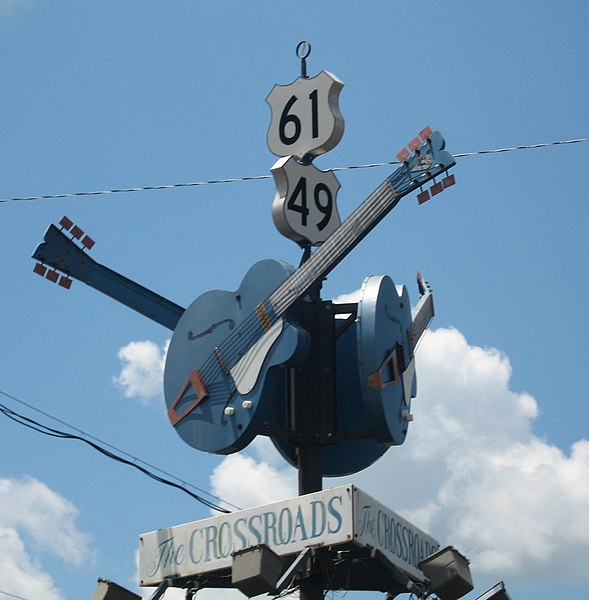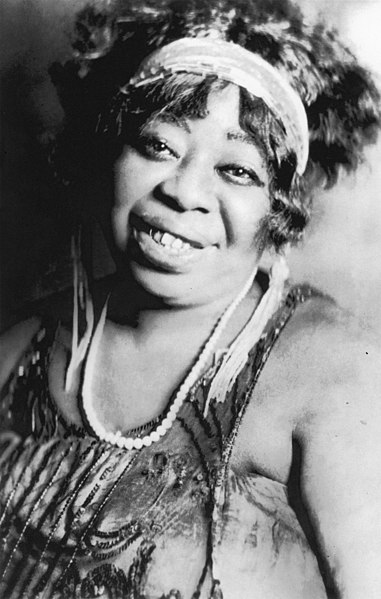Robert Leroy Johnson was an American blues musician and songwriter. His landmark recordings in 1936 and 1937 display a combination of singing, guitar skills, and songwriting talent that has influenced later generations of musicians. Although his recording career spanned only seven months, he is recognized as a master of the blues, particularly the Delta blues style, and as one of the most influential musicians of the 20th century. The Rock and Roll Hall of Fame describes him as perhaps "the first ever rock star".
Alleged gravesite at Payne Chapel near Quito, with one of Johnson's three tombstones
Alleged gravesite at Mount Zion Missionary Baptist Church near Morgan City
Alleged gravesite at Little Zion Church north of Greenwood
The crossroads at Clarksdale, Mississippi
Blues is a music genre and musical form that originated amongst African-Americans in the Deep South of the United States around the 1860s. Blues incorporated spirituals, work songs, field hollers, shouts, chants, and rhymed simple narrative ballads from the African-American culture. The blues form is ubiquitous in jazz, rhythm and blues, and rock and roll, and is characterized by the call-and-response pattern, the blues scale, and specific chord progressions, of which the twelve-bar blues is the most common. Blue notes, usually thirds, fifths or sevenths flattened in pitch, are also an essential part of the sound. Blues shuffles or walking bass reinforce the trance-like rhythm and form a repetitive effect known as the groove.
American blues musician Mississippi Fred McDowell in 1960
American blues singer Ma Rainey (1886–1939), the "Mother of the Blues"
Musicologist John Lomax (left) shaking hands with musician "Uncle" Rich Brown in Sumterville, Alabama
Sheet music from "Saint Louis Blues" (1914)








